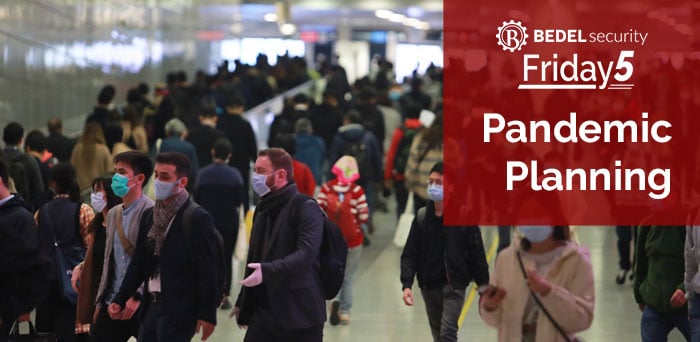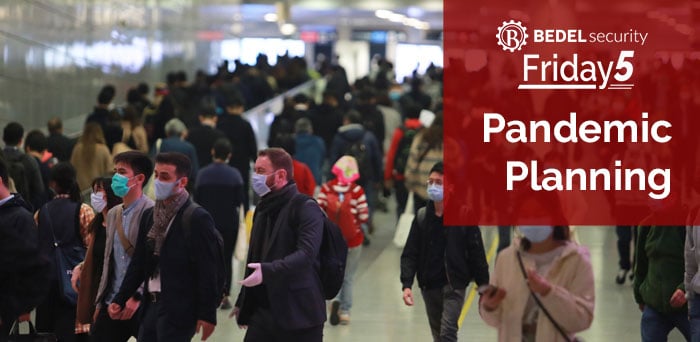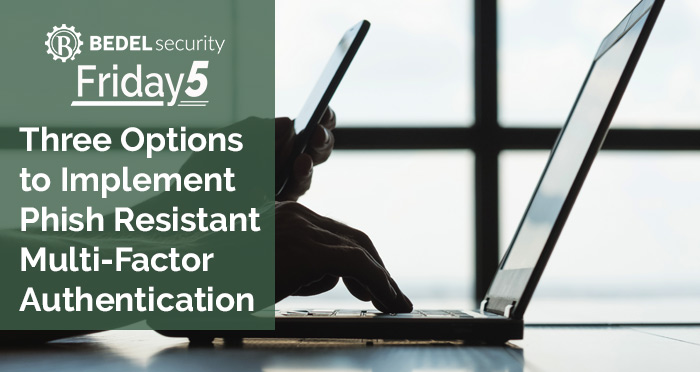Three Options to Implement Phish Resistant Multi-Factor Authentication
Since the pandemic and the rise of work at home, we have become very familiar with Multi-Factor Authentication (MFA). Typically, this is implemented...


We are in the midst of flu season, which according to the reports from my health care provider as I was recently diagnosed, is one of the top 10 from recent memory. Additionally, we hear daily reports in the news about the effects of the Coronavirus which has driven the outlook of the financial markets down. We are seeing reports of the effects to the economy due to the current outbreaks, for example Apple, Inc. had revised its second quarter earnings estimates due to the impact to production as a result of the Coronavirus.
So, what are we to do? Well, let’s dust off the ol’ pandemic plan and make sure it’s updated and hitting the high points. Here’s five things you need to know about pandemic planning:
Overall, planning for the worst case scenario not only can preserve your institution’s reputation but help minimize disruptions to the local and national economy. A paper published by Thomas A. Garret of the Federal Reserve Bank of St. Louis details cites studies by the U.S. Centers for Disease Control and Prevention stating that the initial impact a severe outbreak could lead to 207,000 deaths and losses of $166 Billion or 1.5% of US gross domestic product (GDP) or at the time of the study (2007).
To try to get a picture of what this could look like, many have studied the effects of the 1918 outbreak of the Spanish flu on the US. This outbreak was a classic worst case scenario as the timing was concurrent with World War I and the population being hit hardest in this outbreak was your typical household bread winner. Can you imagine this? The mortality rates were highest for males aged 18-40, typically those with strong immune systems as the deaths were not caused by the flu itself, rather immune system’s response. As a result, businesses were reporting declines of 40-70% due to absenteeism and lower customer activity.
Unlike your traditional disaster scenario (natural disasters, technical disasters, malicious acts or terrorist events) pandemics are much more difficult to predict and would potentially affect every continent. Pandemics also expand the timeframe of a disaster as they typically occur in multiple waves of two to three months.
(For more information on a traditional Business Continuity Plan check out out blog post: Business Continuity Planning)
We have to look at the potential impacts to our businesses through a slightly different lens given the differences in a pandemic vs. a traditional scenario. For example, a pandemic would not result in the loss of a physical facility or system which are typical the most impacted in your traditional scenarios. This hits arguably an even more precious asset, our people. The Department of Homeland Security expects in a severe pandemic absenteeism would reach 40% in the peak of an outbreak, not only due to illness but the need to care for family members and fear of infection. Public health measures may also prevent employee attendance when closures and quarantines are placed in effect. We could then use this lens to determine the impacts to the business with nearly half of the employees absent.
Again, we have to put on a slightly different lens when it comes to risk mitigation given the potential impact(s) of a pandemic. Here are some typical pandemic mitigation measures:
Testing should include pulling in those key assumptions of your mitigation strategy, some examples include:
If you would like to update or put your pandemic plan to the test, we can help! Contact us at support@bedelsecurity.com or 833-297-7681.
Remote Access Risk Assessment
https://www.bedelsecurity.com/lp-remoteriskassessment
Business Continuity Planning
https://www.bedelsecurity.com/blog/business-continuity-planning

Since the pandemic and the rise of work at home, we have become very familiar with Multi-Factor Authentication (MFA). Typically, this is implemented...

The short answer is: It's definitely worthy of serious consideration.